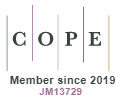Dharavi’s Public Space: The Construction Site
DOI:
https://doi.org/10.15415/cs.2014.21005Keywords:
Dharavi, slum, construction site, participation, NGOAbstract
The view of Dharavi as a dreadful slum in Mumbai has been a challenge for government planners, who were charged with designing for other people’s lives without any knowledge of their necessities and their quality of living. The process of designing housing under this model involved construction, which set as a testing point, Dharavi’s public space. Such construction had clear starting and ending points. However, the true nature of Dharavi’s construction on its public space goes far beyond these practices: The construction site is itself the end result; the stage upon which the slum was gradually transforming its purpose and form, driven by foreigners, NonGovernmental Organizations (NGOs), and its residents. The present paper explores Dharavi’s public space as a construction site from both the perspective of government oficials, and from the perspective of a particular NGO in Mumbai, the team of ‘URBZ’. As the government views it, this site embodies the slum-free vision that satisies a desire for change: a vis on that is encapsulated within the concrete walls of one more building. On the other hand, the slightest familiarity of the team of URBZ with Dharavi’s streets and alleys, its residents, and their activities gives an entirely different picture, in which the public space emerges as a huge construction site of hopes and possibilities. Construction, in this sense, is a work in progress originating not only from residents, but also from NGOs.The key question here is how this work could serve as a means of successfully bringing about positive change in a variety of domains. The conclusions of this paper, thus, conirm the signiicant role of the local NGOs in representing powerful mechanisms for motivating residential participation in positive change and thus, the key contribution lies in uncovering the creative and innovative possibilities grounded in various experiences on the public space of a slum.
Downloads
References
_______(2001) Deep Democracy: Urban Governmentality and the Horizon of Politics, Environment and Urbanization, 13(2), 23-43, doi: 10.1177/095624780101300203. [Online] Available from http://dx.doi.org/10.1177/095624780101300203. [Accessed 13 April 2014]
BOMBAY FIRST AND MCKINSEY, Vision Mumbai: Transforming Mumbai into a WorldClass city; A summary of recommendations. New Delhi: Galaxy Offset (India) Pvt. Ltd. Stable URL: http://www.visionmumbai.org/aboutusdocs/McKinseyReport.pdf <Accesed:06/05/2014 16:40>
DESAI, VANDANA. (1995)Community Participation and Slum Housing: A Study of Bombay. New Delhi: Sage Publications India Pvt. Ltd.
DOXIADIS, C.A. DOxIADIS. et al.(1974) Anthropopolis: City for Human Development. USA & Canada: W.W. Norton & Company.Inc.
ECHANOVE, MATIAS AND SRIVASTAVA, RAHUL. (2010) The Village Inside. In GOLDSMITH, STEPHEN A., AND LYNNE ELISABETH What we See: Advancing the Observations of Jane Jacobs. Oakland: New Village Press, 135-148.
JHA, S.S. (1986) Structure of Urban Poverty: The Case of Bombay Slums. Bombay: Bombay Popular Prakashan.
MEHTA, GEETA. (2008) Harvesting Creativity at the Bottom of the Pyramid. In Urban Typhoon Workshop, Koliwada-Dharavi, report prepared by Urbanology. Mumbai, 15-16. Stable URL: http://urbanlab.org/UrbanTyphoonMumbai.pdf<Accesed: 06/05/2014 16:49>
MIDGLEY, JAMES. et al. (1986)Community Participation, Social Development and the State. New York: Methuen & Co.
PATEL, SHEELA. (2000) Dharavi is in the Midst of a Storm. In HABIB ENGQVIST, JONATAN AND LANTZ, MARIA. Dharavi: Documenting Informalities. New Delhi: Academic Foundation; 282-291.
ROUTLEDGE PAUL. (1993)Terrains of Resistance: Nonviolent Social Movements and the Contestation of Place in India.Westport, CT: Praeger.
RUDOFSKY, BERNARD. (1964; repr. 1987) Architecture Without Architects: A Short Introduction to Non-Pedigreed Architecture. New York: MOMA, 1964; reprinted by University of New Mexico Press, 1987.
SAVCHUK, KATJA. (2008) A snapsot of Koliwada. In Urban Typhoon Workshop, KoliwadaDharavi, report prepared by Urbanology. Mumbai. Stable URL: http://urbanlab.org/UrbanTyphoonMumbai.pdf<Accesed: 06/05/2014 16:49>
SHARMA, KALPANA. (2000) Rediscovering Dharavi: Stories from Asia’s Largest Slum. India: Penguin Books.
TURNER, JOHN F.C. (1976) Housing by People: Towards Autonomy in Building Environments. London: 1976. Reprint, London: Marion Boyars Publishers, 2009.
UNCHS (United Nations Centre for Human Settlements HABITAT). (1984)Community Participation in the Execution of Low-Income Housing Projects, report prepared by UNCHS. Nairobi.
Downloads
Published
Issue
Section
License
Articles in the Journal of Creative Space (Creat. Sp.) by Chitkara University Publications are Open Access articles that are published with licensed under a Creative Commons Attribution- CC-BY 4.0 International License. Based on a work at https://cs.chitkara.edu.in. This license permits one to use, remix, tweak and reproduction in any medium, even commercially provided one give credit for the original creation.
View Legal Code of the above-mentioned license, https://creativecommons.org/licenses/by/4.0/legalcode
View Licence Deed here https://creativecommons.org/licenses/by/4.0/
 |
Journal of Creative Space by Chitkara University Publications is licensed under a Creative Commons Attribution 4.0 International License. Based on a work at https://cs.chitkara.edu.in/ |







